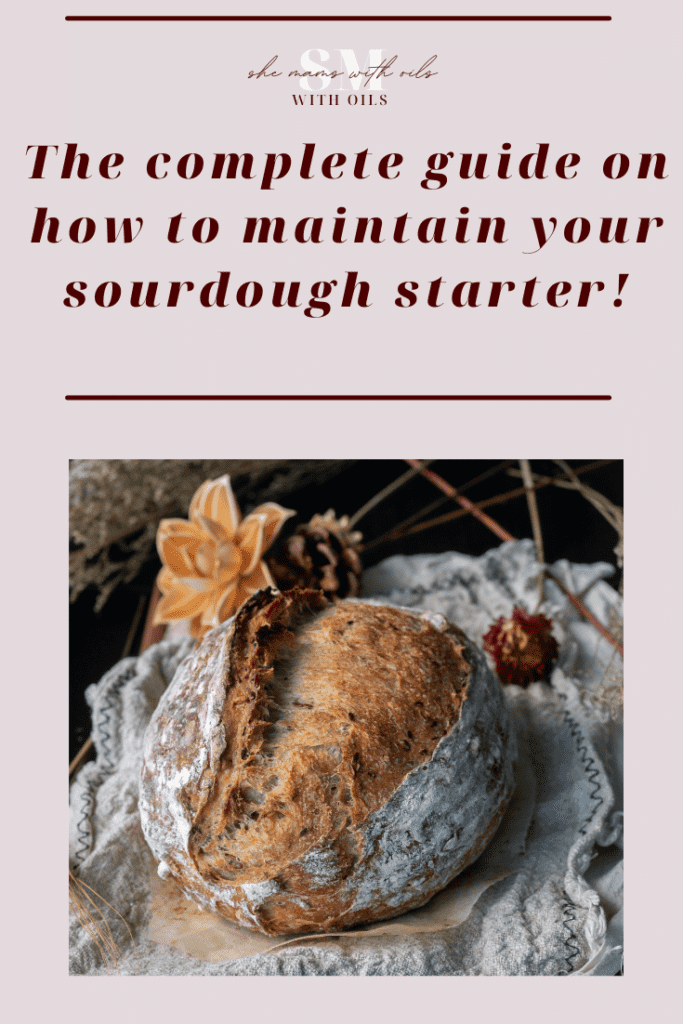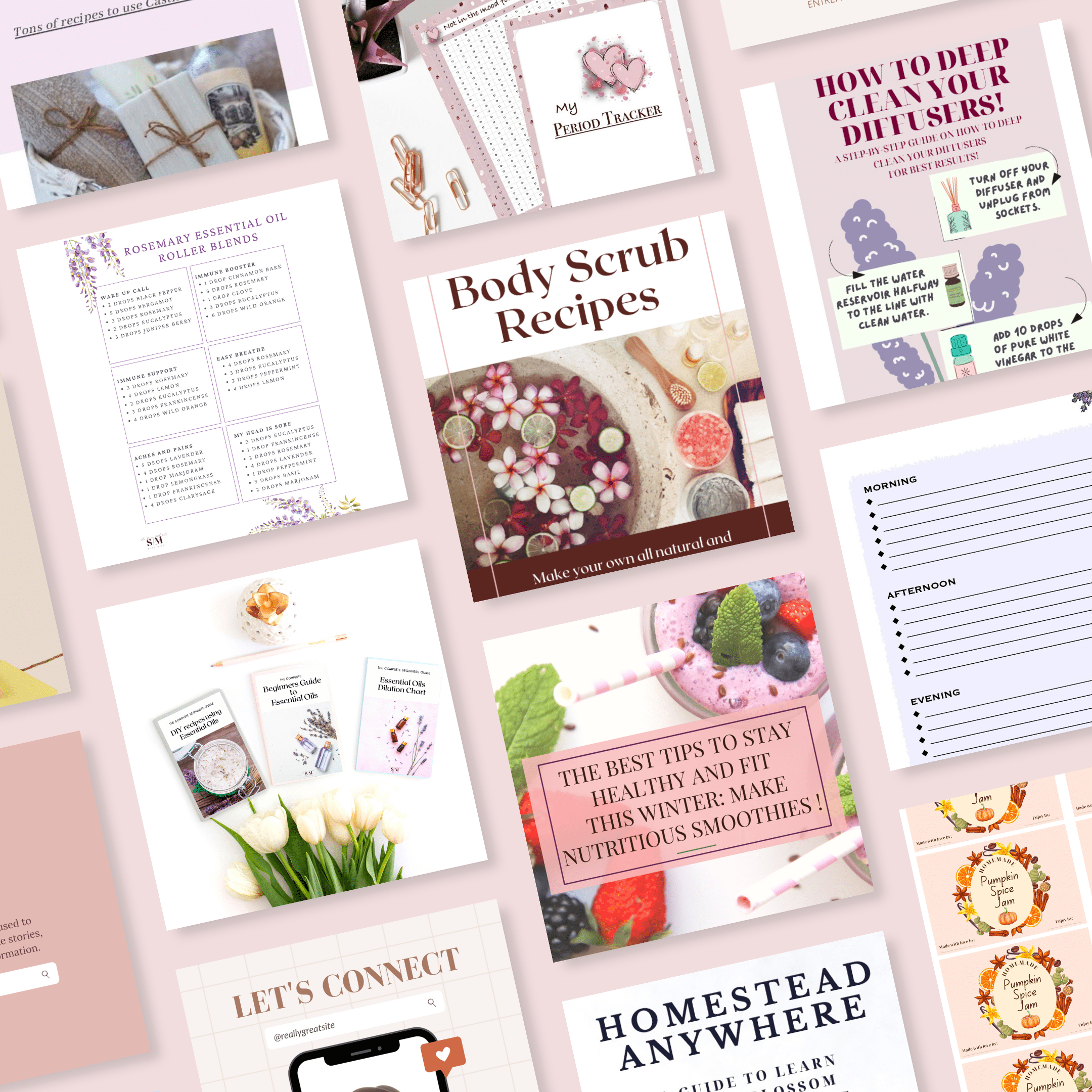MY BEST TIPS ON HOW TO MAINTAIN A HEALTHY SOURDOUGH STARTER
The following are my best tips on how to maintain a healthy sourdough starter.
Are you new to sourdough bread making and baking?
If so, you might have many questions about how to take care of your sourdough starter.
In this post, I’m going to share with you how to look after it.
If you follow my tips on how to maintain a healthy sourdough starter, you can make many yummy recipes!
So, read on for my best tips and advice on how to maintain a healthy sourdough starter.

How to take care of your starter, and how to maintain it so that it will last forever.
The following post contains affiliates, which means I’ll get a small commission if you decide to buy using the links provided. This will add NO EXTRA COST to you but it helps me to keep this blog up and running. Thank you. You can get more info by reading my Disclaimer page.
WHY IT IS IMPORTANT TO LEARN HOW TO TAKE CARE OF YOUR SOURDOUGH STARTER
Once you have acquired a sourdough starter, whether by growing your own, or getting one from someone, it is very important that you learn how to take care of it properly.
A starter is filled with live yeast bacterias. Therefore, it needs to be fed regularly and with the right “food”, if you want to use it for years to come.
Read this post to learn how to maintain your sourdough starter. You will never have a problem baking with it!
Subscribe to my YouTube Channel!
If you’d rather watch a video, you can watch on my Youtube channel!
Don’t forget to pin the post for later!
OTHER SOURDOUGH RECIPES
Nothing beats the smell of a fresh homemade loaf of bread baking in the oven. And even better when that is an entire loaf of sourdough bread!
In my home we love all types of sourdough bread recipes.
I make sure to bake at least a loaf every week.
On a regular basis, we also make many other recipes, such as dinner rolls or English muffins.
Once you get more confident with baking using a sourdough starter, you can try to make many more recipes!
If you want to check my sourdough dinner rolls, you can visit my YouTube channel and watch the video:
IS sourdough bread healthier than whole grain?
Sourdough bread is among the healthiest types of bread out there. Being a fermented food, it is indeed a very good choice when it comes to gut health.
Sourdough bread is free from commercial yeast. In fact, to make a fermented dough, you will be only using two very simple ingredients: water and fresh flour!
If you want to know:
- Why is everybody suddenly obsessed with sourdough?
- How is it different from white bread?
- Does it have health benefits?
You can red the following article:
CAN YOU MAKE SOURDOUGH BREAD WITHOUT A STARTER?
If you want to make any type of sourdough recipe, you will need a starter of course.
Therefore, the first step to sourdough baking is to acquire a healthy sourdough starter.
A sourdough culture (or sourdough starter culture) is what makes the dough rise. It is, in other words, a natural yeast.
You can ask your local bakery for an established, mature starter. A friend or anybody you know could also give you one.
If none of the above are available options to you, you can of course grow your very own starter.
IF YOU ARE INTERESTED IN LEARNING MORE ABOUT FERMENTED FOODS AND DRINKS, YOU CAN CHECK THESE POSTS NOW!
WHAT IS A SOURDOUGH STARTER?
A sourdough starter is nothing more than a combination of flour and water that has been given the chance to ferment at room temperature. It is alive with wild yeast, and that is what will act as a leavening agent when you are making bread.
Wild yeast has been used in bread making for centuries. Well before we had commercially produced, instant yeast, people used wild yeast.
Wild yeast is present everywhere around us (in the air, in flour, etc.). Therefore, to grow your very own starter, you don’t need any special tool. Once the flour and water are combined in a clean glass jar, the wild yeast will naturally multiply and ferment over the course of a few days, if fed properly.
How to grow A sourdough starter
Growing your very own new starter shouldn’t be intimidating. You will need just a cup of water and a cup of flour, a kitchen scale, and a clean glass jar or glass container. Also you will need a warm spot in your kitchen to keep the jar at ambient temperature.
There are many blogs and YouTube videos out there that can show you how to do it.
I personally recommend checking out Lisa Bass’s blog, at farmhouseonboone.com. She has many free resources available to anybody interested in starting using a sourdough starter in bread making.
how to take care of sourdough starter – how to maintain a sourdough starter
Once you have acquired a sourdough starter, whether by growing your own, or getting one from someone, it is very important that you learn how to take care of it properly, to ensure you can use it for years and years to come.
A starter is filled with live yeast bacterias. Therefore, it needs to be fed regularly and with the right “food”.
In this post, I’m going to share with you my best tips on sourdough starter maintenance.
I’ll show you how to take care of your starter and how to maintain it so that it will last forever, and it will make yummy and healthy sourdough bread and many more types of recipes for you!
How do I feed my starter?
In order to feed your starter, you will need water and flour.
I use tap water, but that’s because I have a private well and my water is not contaminated with added chemicals.
If that’s not the case for you, please make sure to use filtered water, or bottled water from the store.
The quality of the water you use it’s very important, as added chemicals can actually harm the good bacterias that keep your starter alive.
Also, you can use warm water to feed your starter if you prefer, but never hot water, as it will kill the wild yeast.
Can I use plain flour for sourdough starter? – What is the best flour for sourdough starter?
Just like for the water, when it comes to choosing what flour to use, for best results I always recommend using organic and unbleached.
Many people bake a loaf of sourdough bread using all purpose flour, but I personally only use Doves Organic Bread Flour.
I find that using bread flour works best for me, and gives me consistent results every time.
Bread flour has a higher content of gluten compared to plain four. Therefore it is ideal when it comes to bread making.
You can find Doves Organic Bread Flour on line or in any grocery and health store.
CAN YOU SWITCH FLOUR TO FEED YOUR SOURDOugh starter?
This is a question that comes up a lot in my experience.
Many people start with white bread flour, but soon realise they want to try their hand at making sourdough bread using whole wheat flour or rye flour.
I was always told not to change the type of flour I use in order to feed my starter. However, I know a lot of people that have done so, and without any bad consequence.
I have never tried it, so I cannot really recommend you do it.
But, I can certainly advise you in the following way. If you really want to switch to another type of flour (for example, if you want to grow a rye starter), I would first divide the starter I already have. Feed one half with your regular flour, let it rest for a few hours at room temperature and then put it back in the fridge.
Feed the other half of the starter with the new flour, and keep it on the kitchen counter. I would certainly do this for a few days, to give the starter a chance to adapt to the new “food”.
If you follow this advice, even if the switch is not successful, and your starter dies off, you will still have the first half sitting in the fridge. Win win!
How much should I feed my sourdough starter? – How do you feed an established sourdough starter?
In order to keep your starter alive and well fed, you need to first weigh how much you already have. Once you know that, the feeding process is really straight forward. Simply add an equal amount (in weight) of both water and flour.
For example, if you have 100g of starter, you must add 100g of water and 100g of flour to it.
After adding flour and water, stir well and let the starter rest on your kitchen counter for a minimum of 6-8 hours before using it in any recipe. During this stage, make sure to keep your glass jar open, so that air can go in. To avoid insects or dust ending up in your starter though, cover the jar with a cheese cloth or a sheet of kitchen paper, and secure it with a rubber band.
Can you overfeed a sourdough starter?
I’m certainly not a professional baker, but I have been baking with a sourdough starter for a few years now and, except for those very first few days when I was trying to understand how to use my starter, I never had a problem.
If I’m honest, I never weigh how much starter I have before feeding it. I totally eyeball it.
I first check how much starter is needed for the recipe I want to make, and then I feed the starter accordingly.
If my recipe calls for 100 grams of active starter, I need to make sure I have it. Therefore, I add enough water and flour to achieve the needed weight of starter, and a little bit more to make sure I’m left with some afterwards, to keep for the next time I want to bake.
In my experience, you CANNOT overfeed a starter. You can certainly underfeed it though, and that will slowly kill the live yeast in the starter.
Do you have to discard sourdough starter every time you feed it?
The answer to this question is both yes and no.
I never discard sourdough starter cause I only leave a little bit in the jar. When I need it, I simply feed it with the quantity of water and flour needed for the recipe, so I don’t have much left over.
The reason why you might need to discard a little bit is if you have too much left and don’t want to use too much flour to feed it again.
For example, let’s say that on the first day you have 100g of starter. In order to feed it you will need equal parts flour and water (in weight), that is to say 100 grams of each.
If you don’t use any of that starter, on the second day you will have 300g of it, and you will then need 300g of flour to feed it. See where I am going?
On the other hand, If you discard a little bit before feeding, then you can simply use less flour.
WHAT CAN I DO WITH SOURDOUGH STARTER DISCARD? – HOW TO USE DISCARDED SOURDOUGH STARTER?
I know I don’t like to waste food, and that’s why I only leave a little amount of starter in the jar after using it for a recipe.
However, if you do need to discard, you can feed it to the chickens if you have them.
Most importantly, there are many many recipes available on line that can be prepared using sourdough discard, so don’t throw it away!
Lastly, you could save some to give to a friend.
How long can sourdough starter go without feeding?
This will depend on how you store it between feeds.
If you store your starter in the fridge, then you can feed it just once a week. However, if you keep it on your kitchen countertop, you MUST feed it every day, even if you don’t actually use it (that’s where discarding comes in handy. See above).
MY BEST TIPS ON HOW TO MAINTAIN A HEALTHY SOURDOUGH STARTER – How to store sourdough starter?
In my opinion, the best way to store your starter is in a sealed glass jar in the fridge.
This is what I personally do.
I keep the starter always in the fridge, and I take it out only when I need it and feed it straight away.
This method works for me because I don’t bake with it every day, so I don’t want to have to feed it daily.
If kept at room temperature, your starter needs feeding every 24 hours max, and over time that can become an expensive chore.
What is a hooch?
If you store your starter in the fridge for a few days, you will notice a dark liquid forming on top of it. That liquid is called a “hooch”.
This is perfectly normal, and it is simply a by-product of the starter. Between feeds, some of the yeast bacterias die, and accumulate in liquid form at the top of the starter.
When you take you starter out of the fridge, you can discard the hooch before feeding if you prefer. Alternatively, you can simply mix it back in the starter, and then feed it as per normal.
Either way works.
HOW TO USE A REFRIGERATED SOURDOUGH STARTER?
As I mentioned above, I keep my starter always in the fridge, and I only take it out when I need it.
In order to bake with it though, you can’t use it straight from the fridge, when it’s cold and not fed.
You will need to feed it properly with the required amount of grams of water and grams of flour, depending on the quantity in weight you already have.
Don’t forget that the right amounts of flour and water are not based on their volume measurements (cups), but on their weight (grams)!
HOW DO YOU KNOW WHEN A STARTER IS READY FOR BAKING?
After you feed your starter, you need to leave it on the kitchen counter for a few hours, in order to ferment.
There is no exact amount of hours. This will vary depending on the time of the year, and on the temperature in your kitchen.
I normally feed my starter in the evening. In doing so, it is ready for baking the following morning.
THE “FLOAT TEST”
The “float test” is a great method for you to use if unsure.
If you want to learn what this method is, and how to perform it, read this article from “kingarthurbaking.com“
how long does it take to make sourdough bread?
You need to keep in mind that sourdough baking is very different from regular bread making.
Sourdough bread is a long fermented bread. Therefore it can take a long time (and certainly many hours) before your bread is ready.
If you want to have fresh sourdough bread first thing on a Saturday morning, for example, you need to have a fed starter ready the previous morning.
The long fermentation is what gives the bread its typical sour taste and its many digestive benefits. Therefore, the long wait is well worth!
HOW TO MAKE SOURDOUGH BREAD
This is my tried and tested recipe.
You will need:
- 620 grams of bread flour;
- 350 grams of water;
- 200 grams of fed sourdough starter;
- 10-15 grams of salt.
To make the dough, simply put all the ingredients in a food processor. Knead for 10 minutes.
If you don’t have a food processor, mix the ingredients in a large bowl. Knead by hand until the dough becomes stretchy.
This video on YouTube will show exactly how to make your sourdough bread:
This is my regular routine:
- The evening before I’m going to make the bread dough, I take the starter out of the fridge. I feed it, and I let it rest in the kitchen for the entire night.
- Next day, I make the dough early in the morning. I let it go through its first fermentation for a few hours, by placing it in a warm place (such as in direct sunlight on a windowsill).
- After about four to five hours, I knead the dough again for a few minutes, and then I let it go through the second fermentation.
- In the evening, after a few more hours have passed, I knead the dough for a final time and I then place it in a Banneton basket to rest in the fridge overnight.
- The following morning, I take the dough out of the fridge and bake it at 250 Celsius Degrees for about 35 minutes.
BAKING SOURDOUGH BREAD TAKES TIME
As you can see, it does take some time to bake sourdough bread from start to finish.
This is something you will master with time: the more you will bake, the easier it will become for you to get organised. Before you know it, baking with a sourdough starter will be second nature to you!

MY BEST TIPS ON HOW TO MAINTAIN A HEALTHY SOURDOUGH STARTER – CONCLUSIONS
So, these are my best tips on how to maintain a healthy sourdough starter.
I hope you will find this post useful.
Starting making sourdough bread is certainly intimidating. It requires a bit of patience, but once you learn how to do it, the rewards far outweigh the issues you might encounter at the beginning of your journey.
Let me know if you make your own sourdough bread and please feel free to leave a comment below. I’d love to hear from you.
Till next time, Dee.
Hi, I’m Dee!
Mom of three; printables creator, natural solutions, simple living and homemade food enthusiast; “Outlander” fanatic.
When I’m not busy writing and designing, you can always find me covered in a cloud of flour in the kitchen, playing and crafting with my children, or making up some blends with my Essential Oils. Also I’m practically obsessed with Crystals and reading during my spare time.
Come along on our crazy journey as a family living in the countryside of Ireland!


